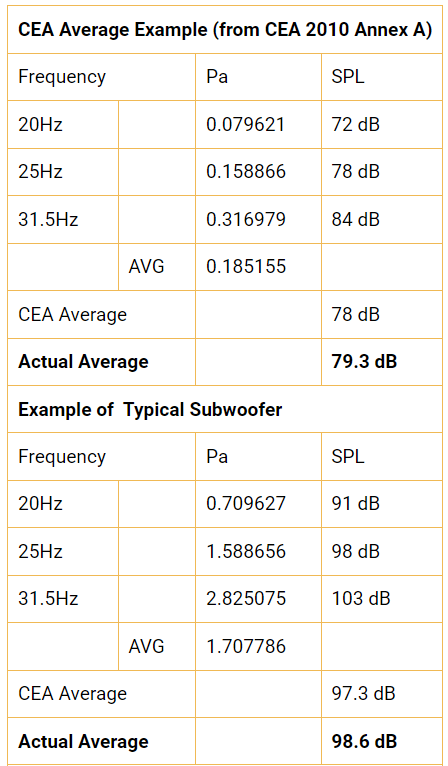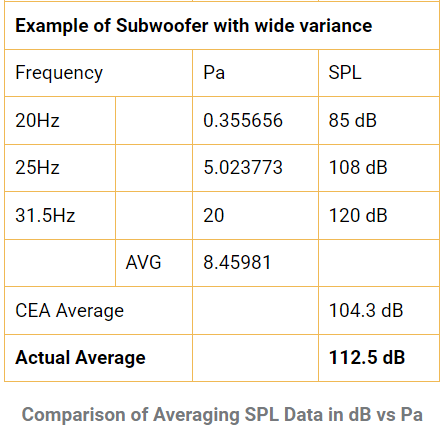Discovering the perfect subwoofer room size calculator for your space entails more than merely pressurizing it to a specific level. It’s about achieving exceptional bass performance tailored to your listening area – the very reason you’re here.
In your quest for the ideal subwoofer, critical factors such as room volume, subwoofer size, power output, frequency range, and impactfulness must be considered. The aim isn’t solely pristine bass; it’s about attaining the optimal bass experience for your needs.
While there’s no universal formula dictating subwoofer selection based solely on room size due to the myriad variables involved, our extensive testing data can serve as a reliable benchmark for determining the necessary output to reach reference levels in your space.
The DJ Techvibe to defining subwoofer room size capabilities offers an invaluable tool – a reliable subwoofer room size calculator – empowering you to choose the perfect subwoofer for your listening environment.
These calculations provide quick, rule-of-thumb insights based on key metrics. Let’s delve deeper into optimizing your audio experience!
Determining Room Size and Room Categorization Process Explained
When it comes to subwoofers, cubic feet provide a more practical measurement for room size than square feet. For instance, a 25×15 room with a 10-foot ceiling might be easier to acoustically manage than a 20×10 room with a 30-foot ceiling. Additionally, if your room extends into another area, you must consider the combined volume (in cubic feet) of both spaces.
Calculating cubic feet (ft^3) is simple: length (ft) × width (ft) × height (ft).
In this discourse, we’ll exclusively employ cubic feet measurements. However, if you prefer meters, simply divide the cubic feet figure by 35.3 to obtain cubic meters.
For example: 1000 ft^3 equals approximately 28.3 m^3.
Rooms are typically categorized based on their size, an aspect crucial for achieving optimal audio quality. While most rooms for subwoofers are smaller compared to professional venues like concert halls or cinemas, ensuring pristine audio in smaller spaces is just as paramount.
The goal remains consistent across room sizes: reaching reference levels with minimal distortion or compression. Larger rooms demand more from speakers or subwoofers to achieve these reference levels effectively.
To facilitate ease of understanding, we’ve segmented room sizes into five categories, as endorsed by industry experts:
- Extra-small: Under 1200 ft^3
- Small: 1200 – 2000 ft^3
- Medium: 2000 – 4000 ft^3
- Large: 4000 – 6000 ft^3
- Extra-large: Over 6000 ft^3
Subwoofer Room Size Calculator tables

Cortersy of audioholics and thank you for prividing us with these tables.

Finding the Right Subwoofer for Your Room Size
Navigating the world of subwoofers involves more than just selecting a model based on specs. One crucial factor to consider is the size of your room. By understanding room size categories, you can make informed decisions to optimize your audio setup for the best possible listening experience. Let’s delve into these categories to help you find the perfect subwoofer for your space.
Extra-Small Rooms (Under 1200 Cubic Feet):
- Rooms smaller than 1200 cubic feet, typically with a listening position around 8.5 ft from the TV, require tailored subwoofer solutions.
- Sealed subwoofers like the SVS SB-1000 are recommended for their ability to integrate well in compact spaces.
- Budget-friendly options such as the Jamo C912 offer quality sound without overpowering bass.
Small Rooms (1200 – 2000 Cubic Feet):
- Spaces ranging from 1200 to 2000 cubic feet benefit from sealed subwoofers or pairs of compact models like the Klipsch 12”.
- The SVS SB-2000 Pro or PB-2000 Pro provide excellent performance in this category, maintaining low distortion even at high volumes.
Medium Rooms (2000 – 4000 Cubic Feet):
- Medium-sized rooms offer flexibility for multiple subwoofers, enhancing bass response and overall sound quality.
- Sealed subwoofers like the SVS SB-2000 Pro excel in smoothing frequency responses, while ported options like the PB-2000 Pro offer extended low-end performance.
Large Rooms (4000 – 6000 Cubic Feet):
- Larger rooms necessitate careful consideration of room dimensions and bass modes to achieve balanced sound.
- Dual subs or larger models like the SVS SB-3000 are recommended for optimal performance in expansive spaces.
Extra-Large Rooms (Over 6000 Cubic Feet):
- Rooms exceeding 6000 cubic feet demand strategic placement of multiple subwoofers to manage bass distribution effectively.
- High-performance options like quad SVS SB-3000 units offer deep bass and precise control for immersive audio experiences.
Key Factors in Subwoofer Selection
Subwoofer Wattage:
Understanding RMS wattage is crucial for selecting a subwoofer suited to your needs.
- RMS wattage reflects the subwoofer’s continuous power output, indicating its ability to deliver clean, distortion-free sound.
- While higher wattage offers greater potential for loud, dynamic audio, it’s essential to consider your listening preferences and budget when choosing a subwoofer.
Frequency Range:
Sound frequency, measured in Hertz (Hz), plays a crucial role in subwoofer performance. Bass notes, characterized by low frequencies, demand a subwoofer capable of reaching the lowest possible frequency for optimal audio quality. Subwoofers that can reproduce frequencies close to the human hearing range of 20Hz to 10Hz offer superior bass depth and immersion. Aim for a subwoofer with a frequency response reaching at least 25Hz, although options reaching 40Hz can suffice depending on your bass preferences and budget constraints.
Subwoofer explosiveness:
The explosiveness of a subwoofer determines its ability to deliver impactful bass. Subwoofer size and power (RMS watts) influence explosiveness, with larger models and higher power typically providing greater impact. While brand-specific tuning affects explosiveness, larger subwoofers generally offer more dynamic range and presence. Dual subwoofers are recommended for rooms larger than 2000 cubic feet to mitigate standing wave issues and ensure consistent bass performance.
Optimal Subwoofer Placement and Size:
When it comes to positioning your subwoofers, strategic placement can significantly impact bass performance and overall sound quality.
- Placing a single subwoofer at each wall midpoint is considered optimal in terms of Std, Max-ave, and Max-min metrics, although it may not excel in reproducing low frequencies.
- Alternatively, positioning two subwoofers at facing wall midpoints can achieve comparable results to four at the midpoints while offering improved low-frequency performance.
- Placing one subwoofer in each corner of the room provides good low-frequency support but may not match the performance of wall midpoints in terms of Std, Max-ave, and Max-min metrics.
- For a balance between performance, price, and aesthetics, positioning subwoofers at two wall midpoints is often recommended.
Conclusion
In summary, selecting the right subwoofer involves more than just considering room size. Factors like room volume, subwoofer size, power output, frequency range, and explosiveness all play crucial roles. Our subwoofer room size calculator offers quick insights to aid your decision-making. Whether your space is extra-small or extra-large, our guide provides tailored recommendations for optimal audio experiences. Find your perfect match with DJ Techvibe’s expertise in subwoofer selection.
FAQ
How do you match a subwoofer to a room size?
Firstly, take into account the characteristics of your listening room. Larger rooms demand larger subwoofers to effectively fill the expanded space with sound. Doubling the room volume necessitates doubling the subwoofer’s energy output to uphold consistent loudness levels. However, above all, your preferences and needs remain paramount, regardless of room size.
What size subwoofer should I get for my room?
In a compact room, a smaller subwoofer suffices, typically a 10- or 12-inch model with at least 100 watts. However, in larger rooms, especially those with open walls extending to other areas of the house, additional power or a larger subwoofer is necessary to ensure the bass sound adequately fills the entire space.
How much room does a subwoofer need?
According to the “rule of thirds,” optimal subwoofer placement involves positioning it approximately one-third of the way from the wall into the room, resulting in the most balanced bass response. If this placement isn’t feasible, an alternative spot at around one-fifth of the way into the room can also yield satisfactory results.
Can a subwoofer be too big for a room?
Ensuring the subwoofer’s volume and crossover point align with the rest of the speakers is paramount. In this context, a subwoofer can never be considered “too big” as long as these settings are properly calibrated to maintain coherence and balance across the audio spectrum.

Karl Schuster
An esteemed figure in the DJ and technology realm, based in Berlin, Germany. Armed with extensive experience on the decks and a deep-rooted passion for innovation, Karl is a co-founder of DJ Techvibe. His visionary leadership aims to redefine the DJ equipment landscape, offering cutting-edge solutions for discerning DJs. With a wealth of expertise and an unwavering dedication to the craft.
